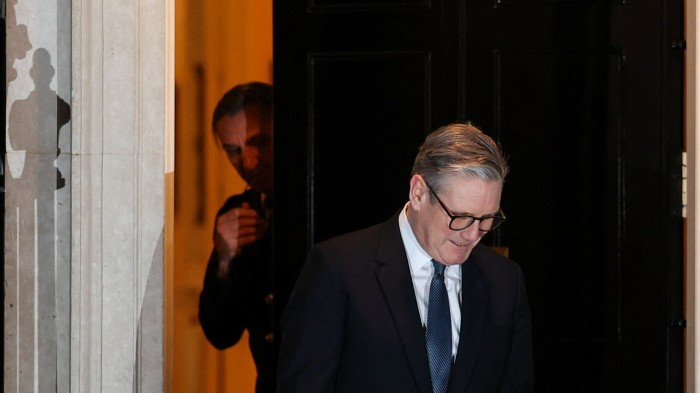Unlock the Editor’s Digest for free
Roula Khalaf, Editor of the FT, selects her favourite stories in this weekly newsletter.
A lot of ink was spilled across broadsheets a month back about how the government’s reckless plans were trashing the bond market and smothering sterling. We dealt with this hyperbole at the time with some data analysis that (thankfully) has (thus far) aged well.
But the past few months have felt pretty hairy. Folks might argue whether that feeling is more down to hefty geopolitical swings, domestic political noise, or data surprises. Surely though we can all agree that we are all living in a more volatile world?
Maybe not if you’re an GBP trader.
While we can debate how much sense it actually makes to split time periods by whoever happened to be Prime Minister at the time, we thought we’d take a look at the data. And the data suggests that Keir Starmer’s period in office has been . . . incredibly boring.
We looked at daily changes to the Bank of England’s broad effective exchange rate…
a measure of the overall change in the trade-weighted exchange value of sterling, calculated by weighting together bilateral exchange rates . . . designed to measure changes in the price competitiveness of traded goods and services, and so the weights reflect trade flows in manufactured goods and services.
. . . against the annualised daily volatility of those changes — a measure of the day-to-day volatility.
The latest reading is pretty much where it was when Starmer took office. And the annualised standard deviation of daily returns has been lower than any of those in the (admittedly limited) thirty-five year data history.
Current challenges and those fresh in our memories always tend to feel more volatile than the warm certainties of the more distant past. Although arguably the chart just ends up being another measure of how wild the Liz Truss era was.
But it’s still early days, and there’s time for future crises to trash this record of dullness.





